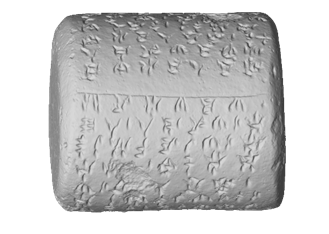The Cypro-Minoan writing system is an important aspect of Late Bronze Age Cyprus and the Eastern Mediterranean as a whole. Together with the other two early writing systems of this part of the world, Linear A and B, it marks an important moment in history when sophisticated societies emerged that felt the need to codify their language and create new and revolutionary means of communication as well as important markers of identity.
Since the discovery of Cypro-Minoan more than a century ago, the research community has yet to agree on what language it expresses, how the writing system is structured and what signs it contains. This lack of consensus among researchers is an expression of the difficulty in studying it, which is in part due to the small corpus of little more than 250 pieces. The other main reason has been the limitations in the base study material that is available. It is still short of a comprehensive homogenous publication of the entire corpus and the individual signs, which is an essential tool for any paleographic analysis or attempt to decipherment.
With this PhD project it is aimed to make a homogenous state of the art 3D documentation of as much of the Cypro-Minoan corpus (over 90%) as possible. Traditionally, ancient writing systems are documented and studied through photographs and the transcription of the signs in an interpretative drawing. This new documentation is going to digitally reunify the material dispersed over various museums, capture information, such as depth and angle, which could not be documented through traditional means and improve the readability of ambiguous signs by enabling a dynamic interactive 3D visualization. By making the material then available to others in an online 3D archive a solid foundation for new research is provided, where researcher do not have to rely on interpretations made by others for their own work and have the possibility to assess and verify it.
Based on the 3D documentation a palaeographic analysis will be carried out investigating the development and variability of signs in a diachronic and synchronic way, which will hopefully lead to a better definition of the signs, the identification of temporal and spatial trends and groups, as well as patterns related to the support. This is carried out building on the cutting edge research that has been carried out within the study of cuneiform tablets, in which 3D models were used for scientific visualization and shape analysis with innovative computer graphics methods. Cypro-Minoan is a perfect case study to further develop and test the potential of such methods since it allows to perform this kind of analysis on the entire corpus of the writing system, unlike cuneiform or other writing systems where the corpus contains thousands of inscriptions.
Thus, this PhD thesis will contribute to our knowledge of Bronze Age writing in Cyprus as well as explore the potential of using 3D methods in this context, developing a pipeline for the study of ancient writing systems that have similar research needs than Cypro-Minoan.

PhD research Martina Polig, joint PhD Ghent University - Cyprus Institute / Nicosia
